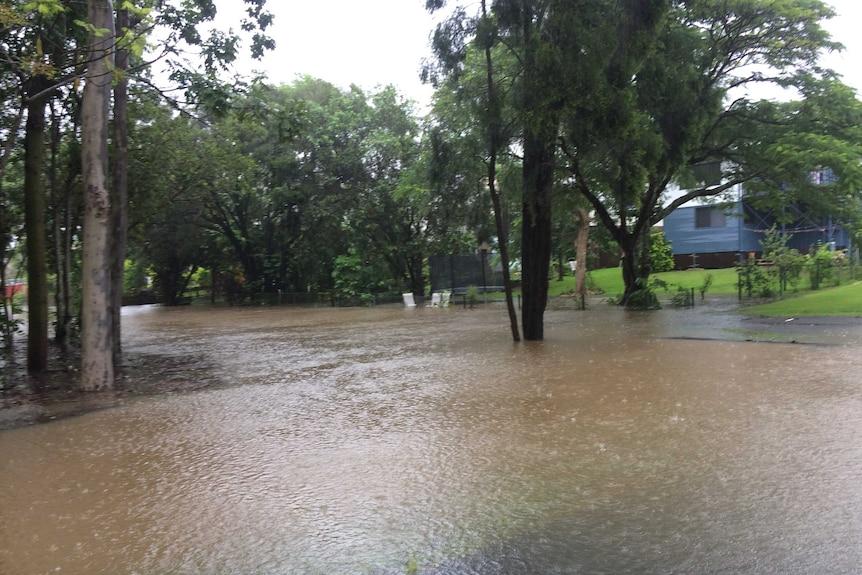Image credit Bruce Mackenzie
As the recovery process begins, the Early Up team shares tips to help you care for your garden after flooding. We understand there’s a big job ahead in the clean-up for many. If you need an extra helping hand with your backyard landscaping, don’t hesitate to contact our Early Up team.
In the meantime, here are our 9 expert tips on how to rebuild your garden by saving us much of it as you can, post-flooding.
Tip 1 – Assess the damage
It’s best to wait for the weather to settle and when it’s safe to do so, take the time to inspect your garden to check on the impact of flood water. Make sure you thoroughly check plants, leaves, roots and the soil.
Some plants may require immediate removal. You may need to replant the plants that have come out of the earth.
Tip 2 – Is your soil waterlogged?
It’s essential to check how much waterlogging is affecting your garden. Excess water in your soil replaces much-needed oxygen and traps any flow. Waterlogged soil damages root growth, potentially causing diseases.
Tip 3 – Remove the mud
It may seem overwhelming at first sight but removing as much of the mud as possible is ideal. This process will help plants start the photosynthesis process and thrive again.
Carefully scrape the mud from roots, trunks and shrubs. Alternatively, you can use a high-pressure water cleaner.
Tip 4 – Compost!
After the floods, adding compost into your garden will balance out the fine silt of mud. Creating piles of leaves and branches will also provide your soil with the organic matter it needs to recover.
Tip 5 – Encourage Drainage
When excess water turns your lawn into a swampy field, it’s time to grab the garden fork. Aeration will help oxygen to penetrate the soil and revitalise grass growth. To drain your garden, dig ditches or furrows, creating pathways for the water to escape to other areas.
Tip 6 – Water Your Plants
You may think more water is the last thing your plants need. However, watering your plants will dilute the concentration of pollutants and toxins, making them less harmful to your environment.
Clean water will also help speed up your garden’s recovery from the extreme weather.
Tip 7 – Prune Prune Prune
Once you’ve assessed the damage, it’s time to remove snapped or bent branches. It’s essential to clean up and throw out damaged plants and broken leaves. You can also cut back stems to the next potential new shoot.
Pruning is vital to enhance the future growth of your garden after flooding.
Tip 8 – When to Apply Fertiliser to Your Garden After Flooding
We strongly recommend holding back on the fertiliser for gardens with saltwater flooding exposure. The salts found in fertiliser can increase damage to your soil.
Soil repair is essential after extreme flood conditions. Allow 3-4 weeks of recovery before applying a water-soluble fertiliser.
Tip 9 – Safety first
To avoid water-borne diseases created from contaminated floodwater, always wear protective gear when tending to your garden. Use waterproof gloves to prevent infection or injury. Never walk through your yard in bare feet or thongs, and wear sturdy, waterproof boots or shoes.
Sewage and contaminated, polluted water can also harm your garden after flooding. Be sure to throw out any produce exposed to floodwater. Do not eat any raw food from your garden.
This year’s flood damage has been the worst ever, devastating our local communities. At Early Up, we understand how challenging this time is for recovery and repair. Let us assist with the clean-up and your backyard landscaping needs.
Early Up is your experienced team of Gardenologists. Proudly local, we can provide expert advice and knowledge for landscape garden design and backyard landscaping services in Tweed Heads, Murwillumbah, the Tweed Coast, and the beautiful Far North Coast of New South Wales.
Don’t handle the flood damage to your backyard by yourself. Let our team of experts take on the tasks and get your garden back to tip top shape. Let us help! Call us today to make an appointment on 0448 300 736.

